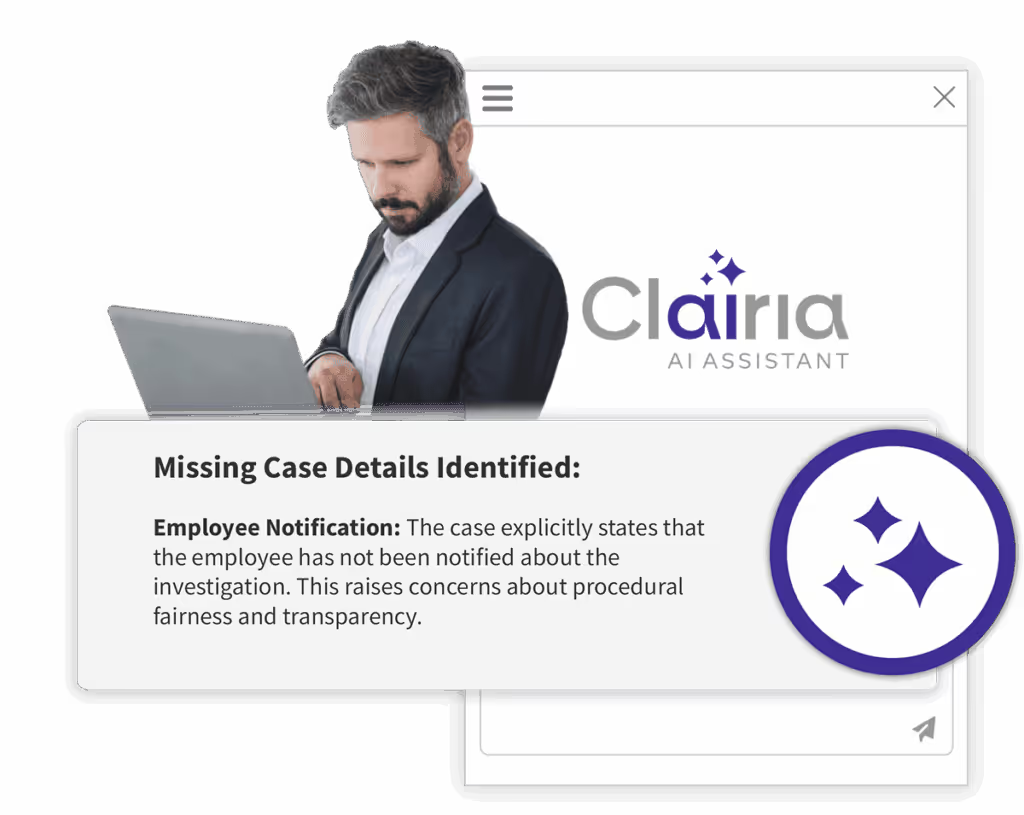At a large organization, firings can happen every day. But to employees, it’s a life-changing and potentially shocking occurrence. That’s why your employee termination process needs to be ethical and respectful, to help outgoing employees cope, protect your company’s reputation and reduce your risk of lawsuits.Take Walmart for example. In March 2023, the retail chain was sued by the EEOC for allegedly refusing to grant disability leave to an employee with Crohn’s disease. According to CNBC, the worker “asked for intermittent leave or excused absences, as well as requesting to be moved to a position closer to the bathroom” to accommodate the chronic illness, “Walmart excused some of her disability-related absences it did not accommodate several other absences that were due to medical appointments and a hospitalization.” The worker was later fired for too many “unauthorized” absences over a six-month period, according to the suit.If true, this incident is not just illegal, but unethical as well. The employee was already juggling work with health issues and took the correct avenues to ask for accommodations, but was still terminated citing the regular attendance policy.So, how do you find the perfect balance between protecting your company and other employees and acting ethically toward the terminated employee? Be thorough, fair, consistent and discreet. Here’s your complete guide for how to fire an employee ethically.
Free Cheat Sheet
How do you determine if your termination process is ethical?
Your HR team has procedures in place to ensure that employees are fired ethically. But how do you actually measure that? Download this free cheat sheet to learn metrics that will help you determine how well you’re sticking to an ethical termination process.
Get Cheat Sheet1. Conduct an Ethical Investigation Before Firing (If Applicable)
Do you suspect the employee committed fraud, harassment or other misconduct? In order to fire someone ethically, you need to conduct a thoughtful, thorough investigation before deciding on discipline.A careful investigation helps you avoid making a rash or biased decision, protecting both the employee (if they’re innocent) and your organization (if the person files wrongful employee termination or defamation claims).
A. Steps to Set Up an Ethical Investigation
Before starting your investigation, plan ahead to make sure you don't miss any steps. In addition to completing the steps described below, you should also:
- Determine the purpose, goal and scope of the investigation
- Create an investigation plan
- Hire external experts and/or investigators, if necessary
- Involve your employee’s union, if applicable
- Keep the accused employee and the complainant (if there is one) up-to-date on the investigation process
- Conduct objective interviews with the accused person, complainant and witnesses
B. Best Practices for Gathering Evidence Ethically
In order to prove an employee did something that warrants termination, you can’t rely on gossip or “bad vibes.” Instead, gather as much information and evidence as you can.
First, look for digital and physical evidence. For example, if you think the employee stole inventory, scan through security footage to place them at the scene. If the employee is accused of harassment, search through their emails with the victim to see if they corroborate the victim’s story.Next, conduct interviews with victims (if applicable), witnesses and the employee. Piece together a timeline of events based on these accounts. Determine each interviewee’s credibility. Finally, decide if you have enough evidence that the employee broke a policy or law to a degree that warrants termination.
C. Thorough Documentation in Ethical Termination
“One of the most effective practices an employer can follow is to document carefully the reasons and the process followed for any employee discharge,” says Robert Bird, professor of business law and business ethics. “Document, document, document is an important practice for human resource personnel.”
Throughout the investigation process, document every step. Write down where or from whom you got a piece of evidence or information, and when. Keep track of who completed each step and why. Not only could strong documentation protect your company from a wrongful termination lawsuit, but it also makes the termination more ethical.
Tell the employee how and why you did what you did. This helps them understand exactly what they’re being investigated for and shows that you took proper measures to come to your conclusion. They might feel more understanding about your decision if they know you came to it through a thorough, ethical and fair process.
RELATED:How to Conduct a Successful Workplace Investigation: Step-by-Step
Free Toolkit
Termination is just one part of a larger workplace culture.
Foster a culture where ethics is valued and prioritized with our free toolkit.
Get the ToolkitD. Align with Internal Policies
In order to fire someone ethically, make sure their alleged behavior is covered by and prohibited in an internal policy. These could include:
- Harassment and discrimination (e.g., sexual harassment, bullying, stalking)
- Fraud and theft (e.g., data theft, conflict of interest, IP theft)
- Health and safety (e.g. failure to wear PPE or follow safety instructions)
- Workplace conduct (e.g., attendance, performance, drug/alcohol use, personal use of company property)
As you investigate, focus on which policy the employee has broken. When you inform them of your decision to terminate their employment, you can point to a specific document and explain how they failed to meet its requirements.
For instance, what if you discovered that the employee has been selling your trade secrets to a competitor? You should find the part of your organization’s anti-fraud policy that expressly prohibits this behavior, then explain that they breached their agreement as an employee by not following it.
“If an employee argues that the discharge was wrongful, the employer can point to established policies and procedures that it used in order to terminate that employee. Of course these policies cannot be illegally discriminatory or otherwise violate the law,” says Bird.
This practice not only helps the employee understand why they’re being terminated, but can also save your company from potential defamation lawsuits.Let’s look at the example above. If you cite the reason for termination as “theft” and share that information, the fired employee could file defamation claims against your organization. However, stating that you found the employee to have “broken an internal policy” has fewer negative connotations.
In most states, if you’re dealing with “employees who want to sue [your company] for defamation due to a bad reference or for firing them for what the employee feels is a false reason,” you are “shielded from any defamation liability for giving the reference, as long as [you] speak in good faith and believe what [you] say to be true,” explains employment discrimination attorney Matt Besser.
2. Maintain Confidentiality in Ethical Employee Termination
In order to fire an employee ethically, you need to protect their privacy throughout the process. This shows that you respect them and can reduce the risk of conflict or violence (more on that below).
To start, schedule the termination to take place “in a neutral, private setting such as a conference room,” says The Society for Human Resource Management (SHRM). Firing an employee at their desk could embarrass them in front of their coworkers. Find a space where you can close the door and, if possible, draw blinds or otherwise block other employees from peeking in.
In addition, keeping the details of the termination confidential also protects your organization from potential lawsuits. If the terminated employee finds out that you’ve discussed their dismissal with other employees (unless those people are involved), your credibility could come into question. As a result, the employee could file a wrongful termination or even defamation lawsuit against your company.
Sometimes, you will have to compromise confidentiality. For example, in harassment cases, you’ll need to share details of the investigation, including the outcome, with the accuser as well as the accused in order to gather accurate information on the incident.
As a general rule, share investigation and termination details only on a “need to know” basis. The fired employee will maintain their dignity and you’ll keep your reputation as a caring, ethical employer.
RELATED:6 Essential Things to Include In Your Company’s Code of Ethics
3. Ensure Fair Treatment for Protected Classes During Termination
Before terminating an employee, consider whether they belong to a protected class. According to the EEOC, these include “men and women on the basis of sex; any group which shares a common race, religion, color, or national origin; people over 40; and people with physical or mental handicaps.” Firing an employee who belongs to one of these groups could result in a lawsuit if they think you’re discriminating.
“Especially if the employee is a minority, female, pregnant, or over 40, it is important to make sure that you are not treating the employee any differently than any other employees,” says attorney Serena Lipski.
Some forms of bias and discrimination are obvious, but for others, you might not even realize you’re doing them. For example, are you firing a pregnant person for missing too much work for medical appointments when you’d allow an employee with other medical needs to miss the same amount of time?
Or, say you are firing an employee for poor performance who happens to be legally blind. If the employee asked for special accommodations to help their performance, did you grant them before terminating the person?
Make sure that you treat all employees consistently and fairly, and make reasonable accommodations for them as required by the Americans with Disabilities Act. That way, if the terminated employee files discrimination claims, your organization will be prepared and protected.
Strong documentation helps defend your company if legal action does occur. Make sure you have written accounts of the incident(s) that led up to the employee’s termination, as well as what policy they violated and how. Include as much information as possible, including incident dates and times, witness/victim statements and any physical or digital evidence you’ve gathered.
Make sure you’ve addressed your biases and done your due diligence to justify the employee’s firing according to your policies and performance reviews, not because of who they are.
Free Cheat Sheet
Catch an employee pocketing cash, inventory or supplies?
Download our free cheat sheet, “How to Fire an Employee for Stealing” to learn how to investigate the incident effectively.
Get Cheat Sheet4. Follow a Consistent Process in the Firing Process
Ethical companies tackle every internal process with consistency and transparency. These values should apply especially to sensitive procedures such as employee terminations.
“Ask yourself how you have handled similar situations, because discrimination lawsuits are almost always brought by employees who feel they have been treated differently from other employees,” says Cynthia Calvert, employment lawyer and president of Workforce 21C.
“If you gave warnings or second chances to other employees under similar circumstances, give warnings or second chances now. This is particularly important in light of research that shows that people are more likely to be lenient with people who are like themselves or who are in majority groups, and that they are unaware that they are being more lenient.
”To ensure consistency, create a written progressive discipline process that’s accessible to all employees. Follow it to the letter, regardless of the employee’s tenure, department or position. SHRM suggests that you “only deviate when an offense is egregious enough to warrant immediate dismissal,” like an extreme act of violence.Need help making sure you’re unbiased? Ask yourself:
- Am I following our written procedures?
- Am I approaching this incident the same way I have for similar incidents in the past?
- Does this incident trigger negative memories of another person/incident?
- Am I making this decision based on facts or personal feelings towards the employee?
- Did I assume the employee’s guilt (or innocence) before investigating?
Employees will know what to expect, you’ll save time deciding how to handle incidents and you’ll reduce your risk of wrongful dismissal claims.
Bonus tip: A termination meeting should not be the first time the employee hears that there’s a problem with their behavior. If there are issues with their performance, they should have been warned and supported by their manager in performance reviews. If there was a misconduct incident, they should be aware of and interviewed for your investigation.
5. Prioritize Employee and Organizational Safety During Termination
Regardless of why you are terminating the employee, treating them with respect and dignity is key. However, you also need to prioritize physical and financial safety to protect your other employees and your organization.
A. Fire Fast to Stop Further Issues
Are you terminating an employee for fraud, harassment or other misconduct? In order to “stop the bleeding,” you need to work fast. The longer you wait to remove the employee, the more time they have to continue their bad behavior.
This could result in major negative effects on your company’s finances and reputation, in addition to your employees’ well-being. For instance, if the employee has been defrauding your organization, they could continue their scheme or come up with another by the time you dismiss them.
Or, if the employee has sexually harassed their coworker, you could face a lawsuit from the victim for failing to protect them. You could also gain a reputation as a company that doesn’t care about its employees and sides with harassers.
According to attorney Eric Meyer, partner at FisherBroyles, LLP, “by not . . . taking action reasonably designed to end the harassment, the company is creating an issue for itself and exposing itself to potential liability down the line.
”Put together a formal document explaining why you’re terminating the employee. In this document, you should include:
- Termination date
- Reasons for termination (as specific as possible, including incident dates and policies broken)
- Information about severance pay and what will happen with their benefits/retirement, if applicable
- List of company property to be returned (e.g. keys, swipe cards, badges, electronics)
- Copies of signed non-disclosure and/or non-compete agreements signed upon employment
Finally, set the termination meeting with the employee as soon as you can after the investigation closes. Share an HR staff member’s contact information in case the employee has questions or concerns.











